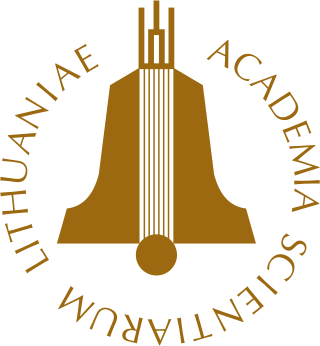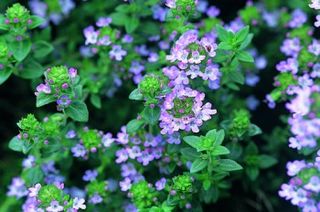Fauna of Lithuania may refer to:
A 2011 list includes 445 spider species. [1]

Episinus angulatus is a small mottled brownish tangle-web spider, found from Europe to Russia.

Segestria senoculata, sometimes known as the snake-back spider, is a species of spider belonging to the family Segestriidae. It has a Palearctic distribution.

Enoplognatha ovata, the common candy-striped spider, is a species of spider belonging to the family Theridiidae. Their scientific name derives from the latin word 'ovatus' which means egg-shaped. Despite its small size, this is a formidable predator which can prey on insects many times its size.

The Lithuanian Academy of Sciences or LMA is a state-funded independent organization in Lithuania dedicated for science and research. Its mission is to mobilize prominent scientists and initiate activities that would strengthen the welfare of Lithuania and contribute to the scientific, social, cultural and economic development of the country.

Pholcus phalangioides, commonly known as the cosmopolitan cellar spider, long-bodied cellar spider or one of various types called a daddy long-legs spider, is a spider of the family Pholcidae. It is also known as the skull spider, since its cephalothorax is said to resemble a human skull. This is the only spider species described by the Swiss entomologist Johann Kaspar Füssli, who first recorded it in 1775. Its common name of "daddy long-legs" should not be confused with a different arachnid group with the same common name, the harvestman (Opiliones), or the crane flies of the superfamily Tipuloidea.

Dermanyssoidea is a superfamily of mites, including most of the mites which parasitise vertebrates.

Harpactea rubicunda is a spider species found in Georgia. It is also found in Lithuania.

Ero cambridgei is a pirate spider species with Palearctic distribution. It is notably found in Lithuania.

Ero furcata is a pirate spider species with Palearctic distribution. It is notably found in Lithuania and the Czech Republic.

Hyptiotes paradoxus, also known as the triangle spider, is a cribellate orbweaver in the family Uloboridae.

Crustulina guttata is a spider species with Palearctic distribution. It is notably found in Lithuania.
Cryptachaea riparia is a spider species with Palearctic distribution. It is notably found in Lithuania.

Enoplognatha thoracica is a spider species with Holarctic distribution. It is notably found in Lithuania.
Euryopis flavomaculata is a tangle-web spider species with Palearctic distribution. It is notably found in Lithuania.

Platnickina tincta is a tangle web spider species with Holarctic distribution. It is notably found in Lithuania.

Lasaeola prona is a tangle web spider species with Holarctic distribution. It is notably found in Lithuania.
Lasaeola tristis is a tangle web spider species found from Europe to Central Asia. It is notably found in Lithuania.
Lessertia dentichelis is a spider species found in Europe, the Canary Islands, Madeira, Canada and New Zealand. The species is notably found in Lithuania.

Sunstroke plants or heliophytes are adapted to a habitat with a very intensive insolation, because of the construction of its own structure and maintenance (metabolism). Solar plants, for example, are mullein, ling, thyme and soft velcro, white clover, and most roses. They are common in open terrain, rocks, meadows, as well as at the mountain pastures and grasslands and other long sunny exposures.